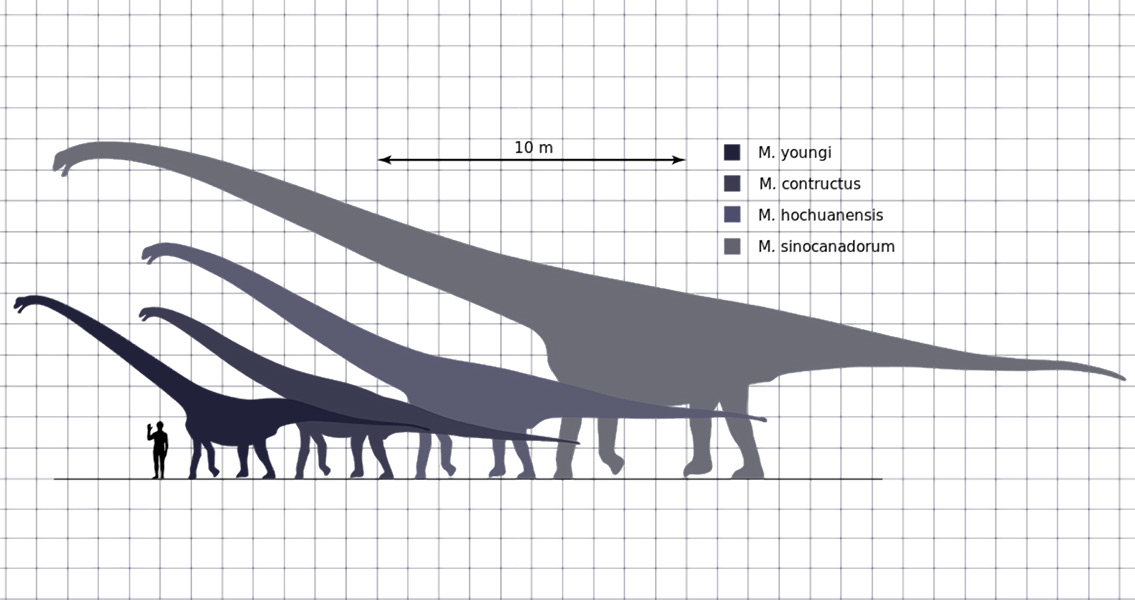<![CDATA[A new species of dinosaur has been discovered in China. Details of the discovery made by Tetsuto Miyashita, Lida Xing and professor Philip Currie have been published in a new article in the Journal of Vertebrate Palentology. Measuring about 15 metres in length, the long-necked dinosaur named Qijianglong (pronounced CHI-jyang-lon) roamed what is now China about 160 million years ago, in the Late Jurassic period. The name translates as 'dragon of Qijiang', as it was found near Qijiang City, close to Chongqing. Qijianglong belonged to a group of dinosaurs called mamenchisaurids, which were characterised by extremely long necks, sometimes measuring up to half their overall body length. Most long-necked dinosaurs, referred to as sauropods, have necks measuring only one third of the length of their bodies. The site where the fossil was found had originally been discovered by construction workers in 2006. Excavations at the site eventually unearthed a series of large necked vertebrae in the ground. Remarkably, the head of the dinosaur was still attached to the neck. "It is rare to find a head and neck of a long-necked dinosaur together because the head is so small and easily detached after the animal dies", Miyashita explained. The discovery of a well-preserved braincase and skull roof has provided the team with rare insights into the neurocranial anatomy of mamenchisaurids. Qijianglong's well-preserved skull and neck have revealed a unique combination of neuro-anatomical characteristics in the species. This could provide a huge leap forward in the study of mamenchisaurids, whose anatomy up until now has been poorly understood. Qijianglong represents a very different species from other mamenchisaurids. The creature was unique as its neck vertebrae were filled with air pockets, meaning that despite its enormous size the neck was relatively lightweight. It was also found that the joints between vertebrae were remarkable. Qijianlong had interlocking joints, meaning that its neck was much more mobile when bending vertically than horizontally. It is possible that Qijianlong used its neck to reach food high in the tree tops, rather than forage on the ground. "Qijianglong is a cool animal. If you imagine a big animal that is half-neck, you can see that evolution can do quite extraordinary things." says Miyashita. Mamenchisaurids are only found in Asia. The discovery of Qijianglong shows that there could have been striking differences among the species, mirroring the diversity found between long-necked dinosaurs from other continents. "Qijianglong shows that long-necked dinosaurs diversified in unique ways in Asia during Jurassic times—something very special was going on in that continent," said Miyashita. "Nowhere else we can find dinosaurs with longer necks than those in China. The new dinosaur tells us that these extreme species thrived in isolation from the rest of the world." Miyashita believes that mamenchisaurids evolved and diversified into many different forms at a time when other long-necked dinosaurs were becoming extinct in Asia. It remains a mystery why mamenchisaurids did not migrate to other continents, although it has been theorised that some kind of geographical barrier could have stopped them from spreading. The Qijianglong skeleton is now housed in a museum in Qijiang. Miyashita speculated that the ancient Chinese could have stumbled across the fossil of a long-necked dinosaur and imagined it to be a dragon - a mythical creature popular in ancient Chinese stories. For more information: Image courtesy of Wikimedia commons user: Steveoc 86 ]]>
New Dinosaur Discovered
